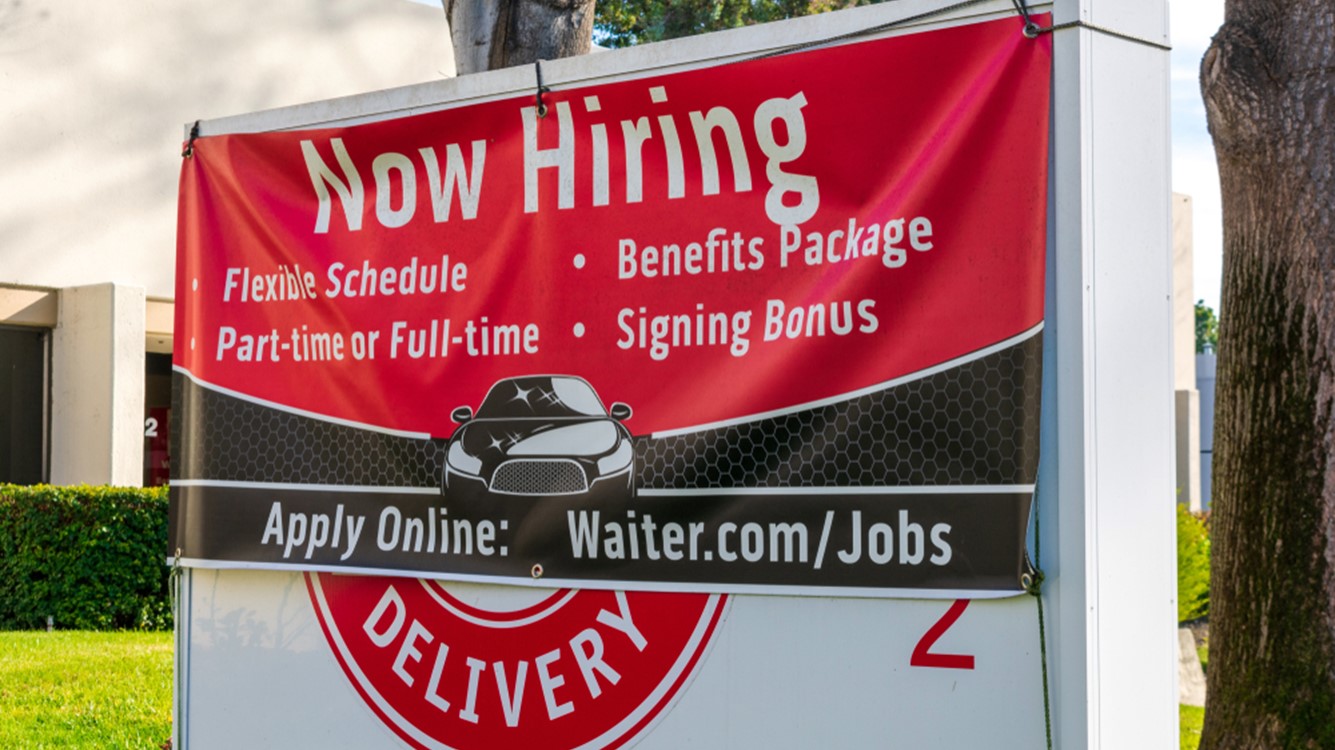Job market still cooling
Many workers are likely to be settled in their jobs, especially after the reshuffling that occurred in 2021 and 2022.

March 19, 2024
Total job openings in the US slightly declined to 8.9 million in January 2024, showing a continued cooling from the peak almost two years ago. Openings are still up 27% compared to February 2020.
In January 2024, six states posted sizable gains in job openings month-over-month, including New York (+82,000), Maryland (+50,000), and Oregon (+41,000). Several large states posted declines in openings, including Texas (-62,000), California (-52,000), and Colorado (-34,000). Real-time data from Indeed show an overall downward trend in job postings for all those states besides New York, suggesting continued declines in the months ahead.
Despite the month-over-month shifts, the total number of new job openings this month in California, Texas, New York, and other states were still higher than the 2019 baseline, which suggests a job market that is still strong, even though it is cooling.
The ratio of job openings to unemployed job seekers, which is an indicator of balance in the labor market, stayed flat at 1.4 in January 2024. That is down from the ratio of 1.8 to 2.0 throughout much of 2022 but is still above the 2019 baseline average. The ratio in some states has cooled significantly, including in California (0.8) and New Jersey (0.9). This ratio will decrease in the months ahead if job openings continue to decline and/or the number of unemployed increases.
The unemployment rate increased in 37 states from January 2023 to January 2024, including in New Jersey (+0.9), Connecticut (+0.8) and California (+0.7). States with declines in unemployment over the same period included Massachusetts (-0.5), Pennsylvania (-0.4) and Texas (-0.2).
The total number of hires was largely flat in 43 states on a monthly basis in January 2024. Pennsylvania was an outlier with the largest number of new hires (+57,000), whereas Florida showed the largest monthly decline (-94,000).
Total quits changed little this month; quits levels are largely similar to the 2019 baseline average for most states. There are some exceptions, including Florida, Pennsylvania, Texas, Colorado, and Virginia where the job market is still running hot. According to ADP data, wage growth is continuing to soften nationally. Workers are seeing smaller premiums for changing jobs. The uncertain economic environment has dampened confidence about quitting. Many workers are likely to be settled in their jobs, especially after the reshuffling that occurred in 2021 and 2022.
Similar to hires and quits, the total number of layoffs changed little, decreasing by 35,000 in January 2024 compared to the previous month. Layoffs declined in California (-28,000), Indiana (-16,000) and Ohio (-16,000), whereas they increased in Georgia (+11,000) and New Jersey (+11,000). That was despite big headlines on job cuts. Many of the layoffs have been absorbed, although there was a slight uptick in the ranks of the unemployed in February. The rise in the ranks of the unemployed in February was made up of a combination of new entrants, job losers and those who completed temporary work.
The labor market is poised to normalize further in the months ahead.
Matthew Nestler, KPMG Economist
Bottom Line
The demand for labor continued to cool in January 2024. The labor market is poised to normalize further in the months ahead. The January and February 2024 retail data show that consumer spending remains resilient, even though it has softened. Inflation is still hotter than expected, as both the CPI and PPI showed stickiness. Taken together, the Federal Reserve will be debating its rate cutting path at this month's meeting of the Federal Open Market Committee (FOMC), its policy-setting arm. A May cut is off the table; we still expect a June cut. The debate over when and how rapidly to cut is heating up within the Fed. Doves worry about waiting too long to cut and a nonlinear rise in unemployment, while hawks are concerned that the Fed could cut prematurely and trigger a more persistent bout of inflation. We still expect a total of only three cuts this year.
Explore more

November data showed slower labor demand
Hiring cooled in November, with 41 states reported lower hiring levels.

KPMG Economics
A source for unbiased economic intelligence to help improve strategic decision-making.

We’re not in Kansas anymore...The view from Washington
Debate over whether the first rate cut will occur in June will be heated.
Subscribe to insights from KPMG Economics
KPMG Economics distributes a wide selection of insight and analysis to help businesses make informed decisions.
Meet our team

